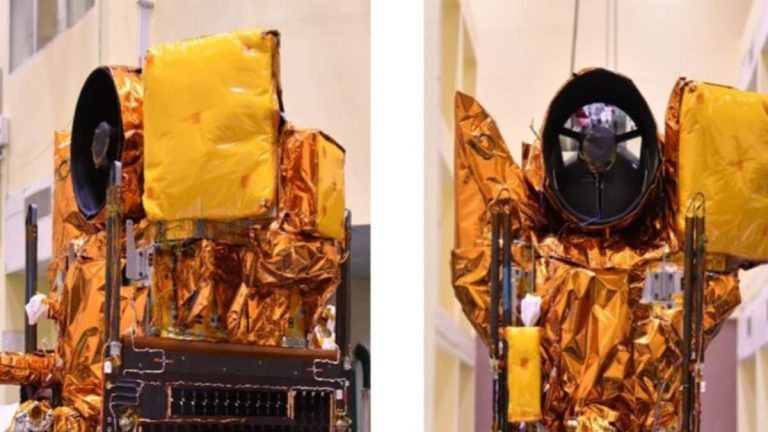
The mini-rocket will fly alongside the agency's newest microsatellite, EOS-08, which is used for Earth observation and has a mission life of one year. Picture/News18
This is the third development flight of ISRO's SSLV, which is specially designed for launching small satellites. After the successful launch on August 15, the rocket will be declared ready for future combat missions by Indian industry
The Indian Space Research Organization (ISRO) is gearing up to launch the final development flight of its low-cost Small Satellite Launch Vehicle (SSLV) on the upcoming Independence Day. After a successful launch, the agency will declare the small rocket ready for future combat missions.
“The launch will take place on August 15 at 9:27 am from Sriharikota. It completes the SSLV development project and enables Indian industry and NewSpace India Ltd (NSIL) to carry out operational missions.
This is the third development flight of SSLV, a three-stage launch vehicle developed by ISRO to cater to the rapidly growing low-Earth orbit 500 kg satellite market. The 34-meter-tall rocket with a liftoff mass of approximately 120 tons is part of the agency's efforts to provide low-cost access to space, with short turnaround times and on-demand launch capabilities. While its first mission in August 2022 failed, it achieved its goal on its second flight in February 2023.
Carrying Earth Observation Satellites – 3 payloads
The mini-rocket will fly alongside the agency's newest microsatellite, EOS-08, which is used for Earth observation and has a mission life of one year. ISRO said the main objectives of the mission are to design and develop microsatellites, manufacture payload instruments compatible with microsatellite busses and leverage new technologies required to operate satellites in the future.
EOS-08 weighs approximately 175.5 kg and carries three payloads and is designed to capture images during the day and night for satellite surveillance, disaster/environmental monitoring, environmental, fire detection, industrial and power plant disaster monitoring. It will also provide data for ocean surface wind analysis, soil moisture assessment, cryosphere research and flood detection in the Himalayan region.
One of the payloads also monitors ultraviolet irradiance at the viewport of the Gaganya mission's crew module and serves as a high-dose alarm sensor for gamma radiation. The satellite will be placed in a circular low-Earth orbit (LEO) at an altitude of 475 kilometers and has a mission life of one year. It can produce about 420 watts of power.
SSLV development project completed
The first SSLV mission in August 2022 ended in failure as the AzaadiSAT satellite it carried hurtled toward Earth shortly after launch. Indian Space Research Organization (ISRO) chief S Somanath put it down to “abnormal placement of the satellite in its intended orbit”, which could have been caused by the rocket's automatic response after detecting a system sensor failure. of. Aside from that anomaly, everything else in the rocket performed very well, he said.
The second launch took place in February 2023 and successfully placed the EOS-07, Janus-1 and AzaadiSAT-2 satellites into a 450-kilometer circular orbit in a 15-minute flight.
Stay up to date on the latest unrest in Bangladesh with our live blog.
